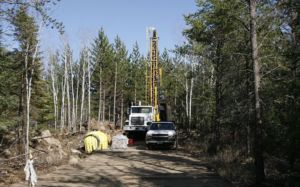Feds Reverse Controversial Ban on Northern MN Mining
Northern Minnesotans looking to reverse the Obama administration’s last-minute arbitrary ban on mineral exploration just got an unexpected holiday gift out of the blue to the shock of just about everyone, including the Star Tribune.
Interior Secretary Ryan Zinke on Friday unexpectedly opened up access to hard rock mining on the borders of the Boundary Waters Canoe Area and Voyageurs, reversing an Obama decision that might have protected the wilderness indefinitely.
In an opinion posted on the agency’s website, officials said that contrary to its decision a year ago, it does not have the discretion to deny Twin Metals its leases for copper and nickel mining.
It was unclear Friday what the immediate effect of the decision would be. Twin Metals, a subsidiary of Chilean mining giant Antofagasta, said it had no immediate reaction and is reviewing the decision.
Environmental naysayers and DFL Gov. Mark Dayton reflexively panned the Trump administration’s action. But GOP House Speaker Kurt Daudt welcomed the development.
“It’s refreshing to have an administration that understands the importance of mining to Minnesota – and the entire United States,” Daudt said. “I hope this is just the start of federal efforts to remove unnecessary obstacles to job creation and economic development so we can grow jobs and paychecks in Minnesota and across the country.”
The decision helps clear the way for Twin Metals to pick up where it left off a year ago on a nearly $3 billion project that would create hundreds of well-paying jobs and benefit the broader Iron Range and Minnesota economy.
The announcement from the feds also caught the Duluth News Tribune by surprise.
The new opinion from the Trump Interior Department’s solicitor general concludes that the two leases that Twin Metals has held from the United States for years, passed on from other companies, granted them a non-discretionary right to a third renewal and, therefore, the Bureau of Land Management did not have the discretion to deny Twin Metals’ lease renewal one year ago.
Twin Metals and mining supporters said the company should be given the chance to develop its proposal, submit the plan for environmental review and apply for permits based on their own merits, not a generic opposition to mining near the BWCAW.
A bipartisan bill to allow mineral exploration to move ahead recently passed the House of Representatives. Yet opponents signaled that they will rely on the courts to prevent Minnesota from realizing the potential of some of the world’s richest mineral deposits.
In 2014, Twin Metals released the results of a “pre-feasibility” study on the mine, saying the project has substantial mineral reserves, would have a low cost of production and could turn a solid profit. The report said the proposed facility would mine about 50,000 tons of ore per day, a far larger operation than the proposed PolyMet open-pit mine about 20 miles to the southwest.
The Twin Metals mine is predicted to produce valuable minerals for at least 30 years — including an estimated 5.8 billion pounds of copper and 1.2 billion pounds of nickel along with platinum, palladium, gold and silver.
